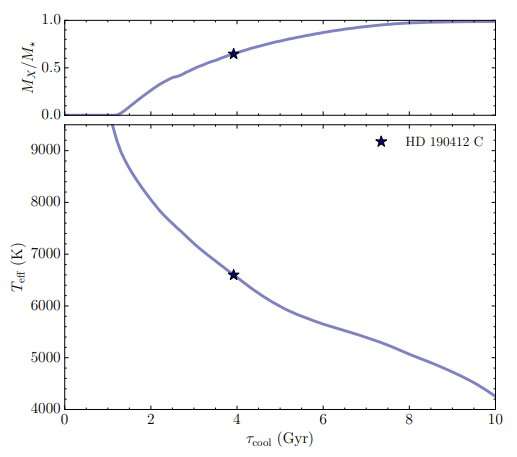June 12, 2023 report
This article has been reviewed according to Science X's editorial process and policies. Editors have highlighted the following attributes while ensuring the content's credibility:
fact-checked
peer-reviewed publication
trusted source
proofread
A white dwarf's journey to crystallizing into a celestial diamond

A group of space scientists from the University of Southern Queensland, the University of Victoria, the University of Warwick and the Kavli Institute for Astrophysics and Space Research discovered a white dwarf star that appears to be in the beginning stages of crystallizing into a celestial diamond.
Alexander Venner, Simon Blouin, Antoine Bédard and Andrew Vanderburg report their findings in an article accepted for publication in the Monthly Notices of the Royal Astronomical Society. It is currently available on the arXiv pre-print server.
Prior research has shown that when a star begins to run out of fuel, it collapses, oftentimes down to a white dwarf. As it does so, it becomes denser. And if such a star is made mostly of metallic oxygen and carbon, its core could become a gigantic diamond. Such stars would, of course, be quite dim. Space scientists do not believe any star has yet fully crystallized to a diamond, however, because math calculations suggest it would take on the order of a quadrillion years. Since the universe is only about 13.8 billion years old, such stars would only be at the beginning of their transformations. In this new effort, the researchers believe they may have found a star in the initial stages of such a change.
The white dwarf, located approximately 104 light years away, is made mostly of metallic oxygen and is part of a quadruple system called HD 190412. The researchers note it looks a lot like Sirius. The white dwarf has been named HD 190412 C.
The team's work has been focused on measuring the cooling delay in the star due to the crystallization process. White dwarfs emit heat due to the energy released during rearrangement of their interior. That slows the cooling of the star, with the rate depending on its makeup. Such dissipation also impacts the brightness of the star and its color, which is what the researchers have been studying. By noting its properties and calculating its distance precisely, they can calculate how far along it is toward losing all of its heat, which shows how far along it is on its path to becoming a celestial diamond.
More information: Alexander Venner et al, A Crystallizing White Dwarf in a Sirius-Like Quadruple System, arXiv (2023). DOI: 10.48550/arxiv.2306.03140
Journal information: Monthly Notices of the Royal Astronomical Society , arXiv
© 2023 Science X Network


















